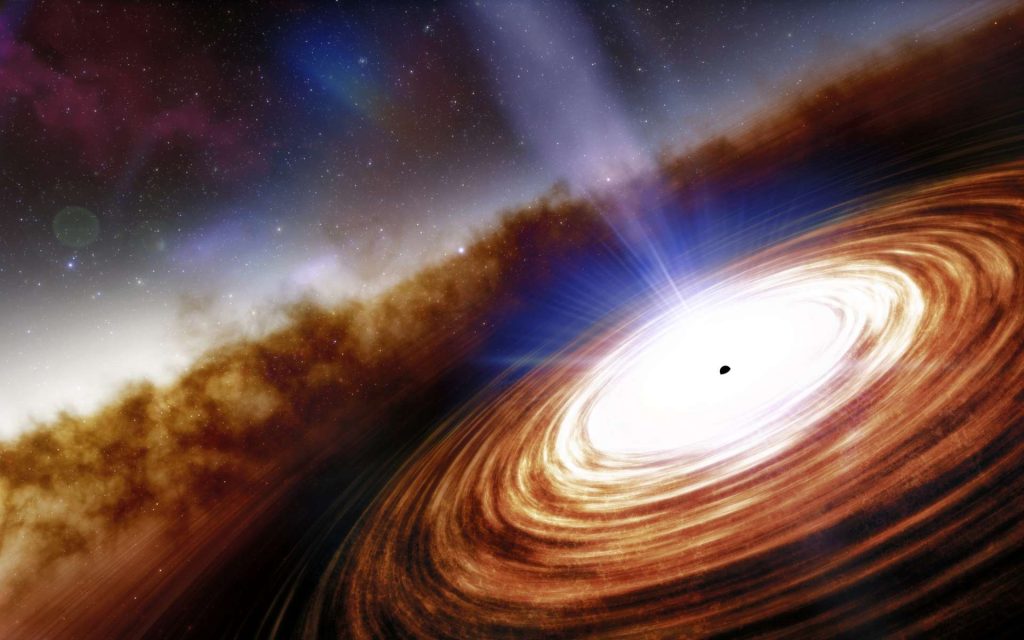Stephen Hawking’s work has influenced many fields, particularly the fields of cosmology: more specifically quantum gravity and black holes. He was the first to suggest that black holes behave in such a way that two fundamental theories are at odds, namely relativity and quantum mechanics. This paradox has puzzled scientists for half a century and has led some to question the basic laws of physics. Recently, scientists say they may have been able to solve it, relying in particular on the fact that black holes have a property they have dubbed “the quantum hair of gravity.” This would be a major advance in theoretical physics.
Black holes are cosmic bodies that we have not yet fully understood. Thus, in astrophysics, a Black hole It is defined as an object so compressed that the strength of its gravitational field prevents any form of matter or radiation from escaping from it. In other words, its gravity causes spacetime to bend so much that nothing can reach the speed needed to escape. Such objects cannot emit or scatter light, and therefore are black, which in astrophysics means they are “optically invisible”.
In the same way, information cannot escape from it, and Einstein’s general theory of relativity suggests that information about what enters a black hole cannot leave it, that is, say we cannot determine what, suffixentered the black hole. But quantum mechanics says it’s impossible. This is the paradox of information that Stephen Hawking highlighted in 1976.
An international quartet of physicists, including a professor and research student from the University of Sussex, have co-authored two research papers that could greatly impact our understanding of black holes and claim they are the solution to a problem that has puzzled scientists for nearly 10 half-century. The studies are successively published in journals Physical Review Letters And the Physics Letters B.
Black holes and the information paradox
First, let’s go back to the information paradox. Hawking realized that black holes radiate in a unique way. Their deviation in spacetime would change the wave nature of the surrounding quantum fields so that a form of thermal radiation would be produced. This means that the black hole must slowly evaporate, releasing its energy, photon after photon, into the universe. When it radiates, the black hole loses energy and therefore mass. In fact, general relativity indicates that information can essentially disappear into a black hole, after that hole evaporates. On the contrary, the laws of quantum physics state that information is preserved in black holes. This is where the information paradox lies.
There were a myriad of suggested solutions, including ” fire wall theory “, since information was supposed to burn before it entered a black hole, the theory” darkinos mysterious ball Black holes are supposed to have blurry boundaries. But most of these proposals required rewriting the laws of quantum mechanics or Einstein’s theory of gravity, the two mainstays of modern physics.
Quantum hair
All theories that postulate the continuity of information actually describe these remaining connections to the universe as “whiskers”. That’s why Xavier Calmet and colleagues suggest that when matter collapses into a black hole, it leaves a faint imprint in its own gravitational field. The authors called it “quantum gravity poetry” because their theory supersedes an earlier idea called “quantum gravity poetry.” No hair theory It was developed in the sixties. The “bald black hole theory”, based on classical physics, asserts that bald black holes can be thought of as surprisingly simple objects, defined only by their mass, electric charge, and angular momentum, related to their rotational velocity.
Rather than simple things, the authors claim that black holes are much more complex. They believe that the quantum hair theory provides the mechanism by which information is preserved during a black hole collapse. This new solution applies quantum thinking to gravity in the form of a theoretical particle called the graviton. These hypothetical elementary particles will transmit gravity in most quantum gravity systems, in the same way that a photon is related to the electromagnetic force. Through a series of logical steps showing how gravitons might behave under certain energy conditions, the team demonstrated their model for how information inside a black hole stays connected to surrounding space.
Specifically, the researchers compared the gravitational fields of two stars with the same total mass and radius, but with different compositions. In classical physics, two stars have the same gravitational potential, but on a quantum level, the potential depends on the star’s composition. When stars collapse into black holes, their gravitational fields preserve the memory of star formation and lead to the conclusion that black holes have hair. Information about the matter that fell into the black hole will leave a trace of its path, which will theoretically allow us to reach the composition of the black hole.
Professor Xavier Calmette, from the University of Sussex, exclaimed EXCLUSIVELY BBC News : ” The problem has been resolved! Our solution does not require speculative thoughts; Instead, our research shows that both theories can be used to perform consistent black hole calculations and explain how information is stored without the need for radical new physics. “.
However, there is no obvious way to test the theory using astronomical observations, the gravitational fluctuations would be too small to be measured. As an interesting theory, it is based on a solid framework. But it should be carefully scrutinized by the scientific community.
Professor Calmette concludes his discovery, in communication : ” It will take time for people to accept it. One consequence of Hawking’s paradox was that general relativity and quantum mechanics are incompatible. What we found is that they are completely compatible. So it will take time for people to accept that there is no need for a drastic solution to solve the problem. “.
source: Physical Review Letters

“Hardcore beer fanatic. Falls down a lot. Professional coffee fan. Music ninja.”







More Stories
NASA investigates Earth!
Pregnant female snow leopard at the Toronto Zoo
When the sun rises Radio-Canada.ca